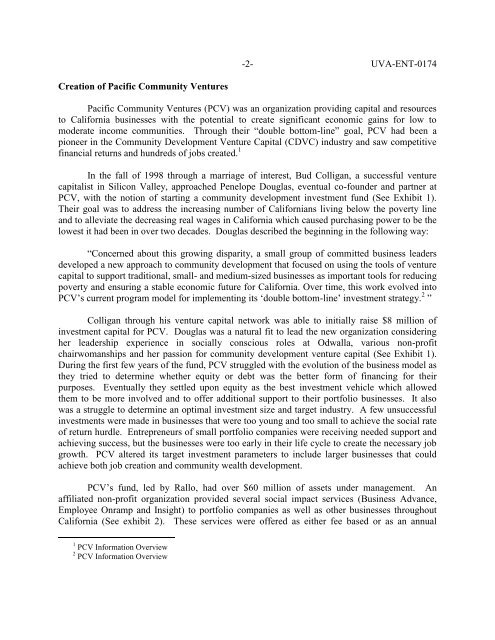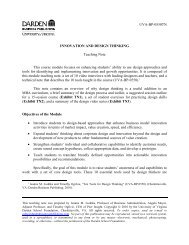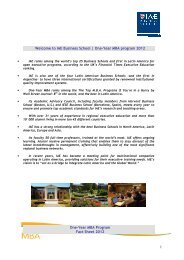Pacific Community Ventures & Galaxy Desserts: Community ...
Pacific Community Ventures & Galaxy Desserts: Community ...
Pacific Community Ventures & Galaxy Desserts: Community ...
Create successful ePaper yourself
Turn your PDF publications into a flip-book with our unique Google optimized e-Paper software.
Creation of <strong>Pacific</strong> <strong>Community</strong> <strong>Ventures</strong><br />
-2- UVA-ENT-0174<br />
<strong>Pacific</strong> <strong>Community</strong> <strong>Ventures</strong> (PCV) was an organization providing capital and resources<br />
to California businesses with the potential to create significant economic gains for low to<br />
moderate income communities. Through their “double bottom-line” goal, PCV had been a<br />
pioneer in the <strong>Community</strong> Development Venture Capital (CDVC) industry and saw competitive<br />
financial returns and hundreds of jobs created. 1<br />
In the fall of 1998 through a marriage of interest, Bud Colligan, a successful venture<br />
capitalist in Silicon Valley, approached Penelope Douglas, eventual co-founder and partner at<br />
PCV, with the notion of starting a community development investment fund (See Exhibit 1).<br />
Their goal was to address the increasing number of Californians living below the poverty line<br />
and to alleviate the decreasing real wages in California which caused purchasing power to be the<br />
lowest it had been in over two decades. Douglas described the beginning in the following way:<br />
“Concerned about this growing disparity, a small group of committed business leaders<br />
developed a new approach to community development that focused on using the tools of venture<br />
capital to support traditional, small- and medium-sized businesses as important tools for reducing<br />
poverty and ensuring a stable economic future for California. Over time, this work evolved into<br />
PCV‟s current program model for implementing its „double bottom-line‟ investment strategy. 2 ”<br />
Colligan through his venture capital network was able to initially raise $8 million of<br />
investment capital for PCV. Douglas was a natural fit to lead the new organization considering<br />
her leadership experience in socially conscious roles at Odwalla, various non-profit<br />
chairwomanships and her passion for community development venture capital (See Exhibit 1).<br />
During the first few years of the fund, PCV struggled with the evolution of the business model as<br />
they tried to determine whether equity or debt was the better form of financing for their<br />
purposes. Eventually they settled upon equity as the best investment vehicle which allowed<br />
them to be more involved and to offer additional support to their portfolio businesses. It also<br />
was a struggle to determine an optimal investment size and target industry. A few unsuccessful<br />
investments were made in businesses that were too young and too small to achieve the social rate<br />
of return hurdle. Entrepreneurs of small portfolio companies were receiving needed support and<br />
achieving success, but the businesses were too early in their life cycle to create the necessary job<br />
growth. PCV altered its target investment parameters to include larger businesses that could<br />
achieve both job creation and community wealth development.<br />
PCV‟s fund, led by Rallo, had over $60 million of assets under management. An<br />
affiliated non-profit organization provided several social impact services (Business Advance,<br />
Employee Onramp and Insight) to portfolio companies as well as other businesses throughout<br />
California (See exhibit 2). These services were offered as either fee based or as an annual<br />
1 PCV Information Overview<br />
2 PCV Information Overview








